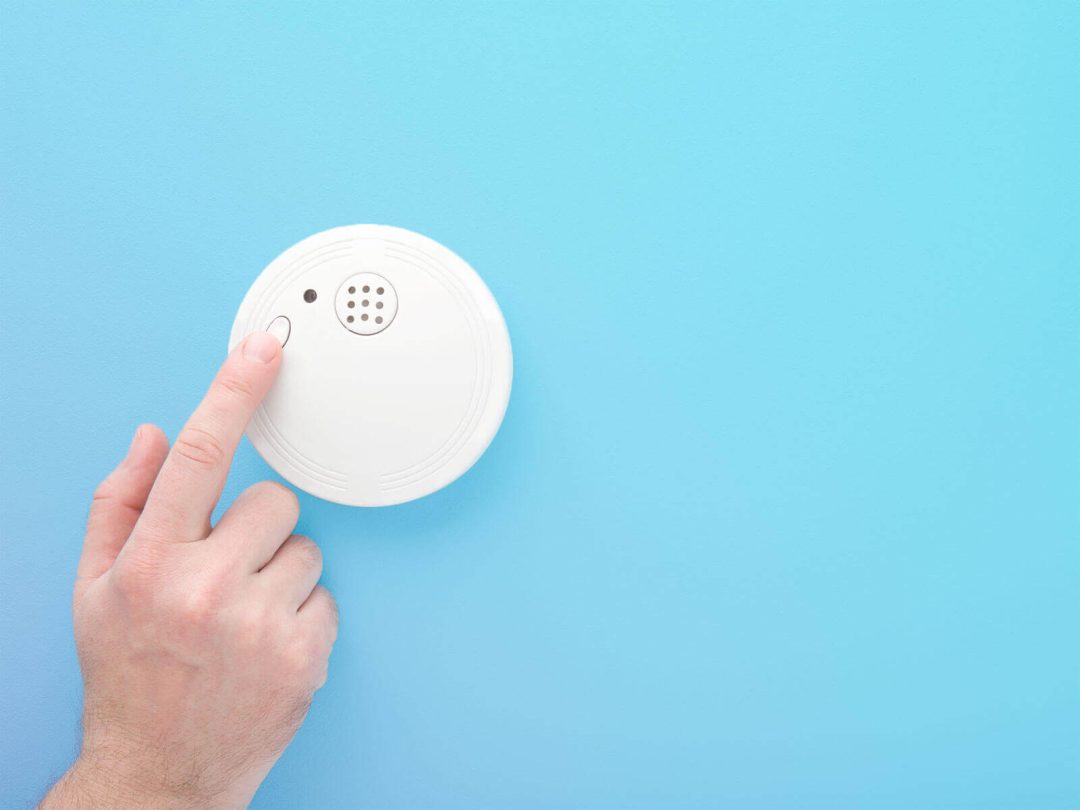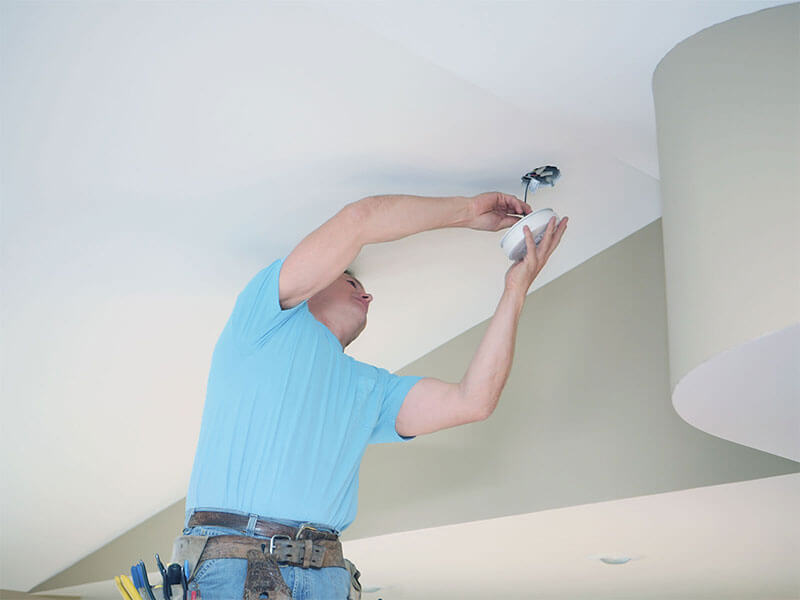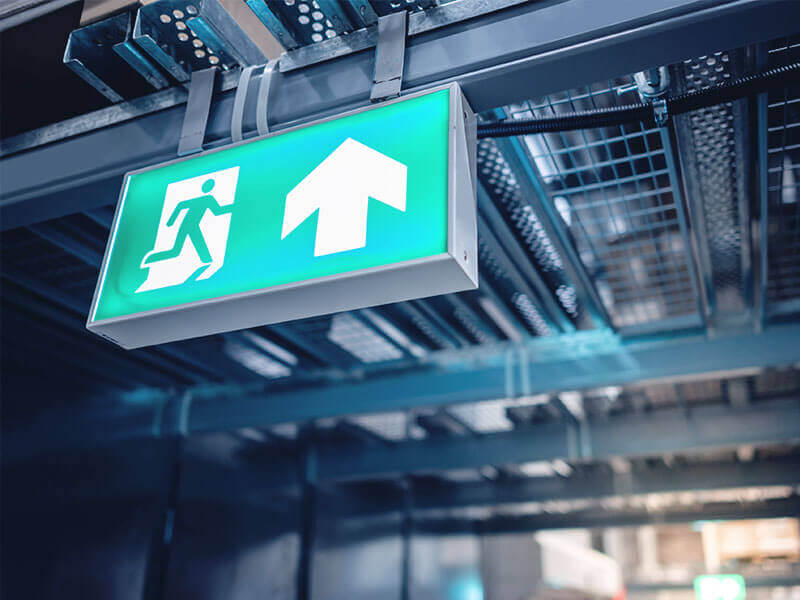August 29th, 2023
5 Side hustles to enhance your performance and wellbeing
Property Management
Property Management

Smoke alarms are an extremely important aspect of property management, as in many cases they’re do or die. Therefore it’s important to ensure you’re up to date with any relevant legislation and compliance tips. Smoke alarms save lives in the unfortunate event that one of your properties is subject to a house fire. While we often don’t like to think of the worst-case scenarios, 17,000 homes are subject to house fires in Australia annually. We spoke to REINSW Director and Deputy Captain & Vice President for NSW Rural Fire Service, Ricky Briggs who shared the importance of smoke alarm compliance for Property Managers.
“Put simply, Smoke Alarms do save lives. As an operational firefighter most jobs we attend, the residents have already self-evacuated thanks to the great job alarms do. You can’t smell smoke in your sleep but smoke alarms can. Preservation of life is first and foremost the most important followed by the structure. In any fire investigation, the first question by insurance companies to landlords and their agents is usually “Where is the smoke alarm compliance certificate?”. To be compliant and know that the residents have the best chance to escape in the event of a fire all for around $2.30 per week… why wouldn’t you?”
We don’t say all of this to stress you out, but instead to illustrate the importance of ensuring that your fire safety practices are up to date. Like many aspects of property management, smoke alarm compliance can feel like an arduous process filled with many steps. Although, with the right tool kit and integrators it doesn’t have to be. That’s why we’ve compiled the ultimate smoke alarm compliance checklist, to make sure that you’re not only complying with legislation but doing everything possible to ensure the safety of your tenants!

New South Wales (NSW)
In NSW, smoke alarm legislation is primarily governed by the Environmental Planning and Assessment Act 1979.
Legislation requires smoke alarms to be installed in all residential buildings where people sleep, including houses, apartments and relocatable homes.
Victoria
In Victoria, smoke alarm regulations fall under the Building Regulations 2018.
Smoke alarms are mandatory in all residential buildings where people sleep, including houses, apartments and relocatable homes.
Queensland
Queensland has specific legislation called the Building Fire Safety Regulation 2008.
It mandates the installation of interconnected photoelectric smoke alarms in all bedrooms, hallways that connect bedrooms with the rest of the dwelling, and on every level of the residence by 2027.
Western Australia
Western Australia follows the Building Regulations 2012 for smoke alarm requirements.
Legislation requires the installation of mains-powered or non-removable battery smoke alarms in existing dwellings and new builds.
South Australia
South Australia’s smoke alarm regulations are outlined in the Development Act 1993.
It mandates the installation of photoelectric smoke alarms in all residential properties where people sleep.
Tasmania
Tasmania’s smoke alarm requirements are set out in the Building Regulations 2014.
Legislation mandates the installation of smoke alarms in residential buildings where people sleep.
Australian Capital Territory (ACT)
The ACT follows the Building (General) Regulation 2008 for smoke alarm regulations.
Smoke alarms are mandatory in all residential buildings where people sleep, including houses, apartments, and relocatable homes.
Northern Territory
In the Northern Territory, the Building Act and Building Regulations outline smoke alarm requirements. Legislation requires the installation of smoke alarms in residential buildings where people sleep.

With this being mandated as well as being best practice around Australia, it’s the perfect place to start our checklist. We encourage you to ensure that you’ve got the correct processes in place to guarantee that you are alerted when the annual checkup rolls around. To make sure you’re compliant it’s best to obtain a certificate of compliance upon completion. Alternatively, you can take the guesswork out of the process by consulting one of our safety Integrators who can conduct the smoke alarm checks on your behalf!
It’s important to make sure that any repairs or smoke alarm changes are carried out by an authorised electrician. This prevents any mishaps from occurring and guarantees that all repairs are compliant with legislation. Top tip: Before the repairs have been conducted ask the electrician for their license number and insurance. After the repairs, follow up and make sure that their license number is on the receipt for safekeeping.

As stated by our friend Damon Hill from Taskforce, it’s strongly encouraged that you upgrade to interconnected photoelectric smoke alarms. As the name suggests interconnected photoelectric smoke alarms allow for cohesion and an increased level of safety within the home. These alarms work by sounding all alarms within a dwelling if one detects smoke, this way occupants in all areas of the dwelling can be alerted and safely evacuated.
Everyone is different, with varying levels of abilities, as well as varying lifestyles. With that being said, we spoke to Kristyn Heywood from Syncom who stated that “being aware of the occupant and their needs may change the types of smoke alarms installed in the rental property, for instance, those with difficulty hearing would benefit from alarms that use vibration or lights, or personal alarm systems, to alert of smoke/fire. The National Disability Insurance Scheme (NDIS) can provide financial assistance with installation.”
It’s all well and good having smoke alarms installed, however, if your tenants can’t evacuate their dwelling easily and efficiently they become null and void. Therefore, we suggest thinking about the emergency paths and exit points of your property to ensure that they are danger-free and easily accessible. Top tip: Also consider the property at night time, taking into consideration any stairs or exits that may need additional lighting to make them easily recognisable.

Granny flats and outhouses can often be overlooked, being just as important as the main dwelling. Granny flats can be used as rental units to generate additional income, becoming popular across Australia. Over the last couple of years, state governments have allowed granny flats to enter the rental market due to the housing shortage across the country. Granny flats are classified as Class 1a buildings under the National Construction Code, meaning that they are held to the same smoke alarm installation requirements as any principal living dwelling.
Thanks for taking the time to read about smoke alarm compliance and how you can ensure you’re staying up to date with ever-changing legislation. Still feeling overwhelmed? Reach out to one of our safety compliance Integrators here.
Disclaimer
PropertyMe is not a smoke alarm compliance provider. You should consider seeking independent smoke alarm compliance advice to check how the information relates to your unique circumstances. The information provided above is concerning the time of posting (February 2024), legislation should be checked periodically to ensure compliance.
We link to external sites for your convenience. We are selective about which external sites we link to, but we do not endorse external sites. When following links to other websites, we encourage you to examine the copyright, privacy, and disclaimer notices on those websites.